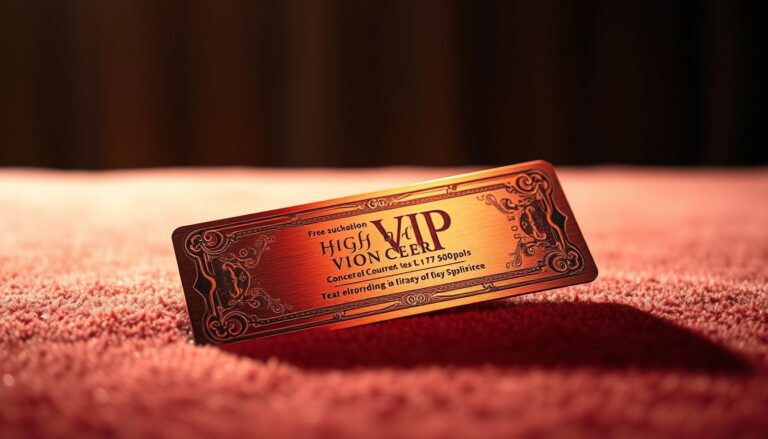When attending a music festival, one of the most noticeable aspects of the experience is the wristbands worn by attendees. These aren’t just any ordinary bands; they often carry significant meaning, representing various causes, affiliations, or simply serving as a form of self-expression.
The significance of festival wristband colour codes lies in their ability to convey messages, show support for causes, or identify group affiliations. As we explore the world of festival wristbands, it becomes clear that these simple bands hold a deeper meaning, making them more than just a festival accessory.
Key Takeaways
- Understanding the meaning behind different festival wristband colours.
- Exploring how wristbands are used to show support for various causes.
- Discovering the role of wristbands in enhancing the festival experience.
- Learning about the different types of wristbands and their significance.
- The importance of wristband colour codes in festival culture.
The Evolution of Festival Wristbands
The humble festival wristband has undergone a significant transformation since its inception, evolving from simple paper tickets to the vibrant, durable bands we know today. This change reflects broader shifts in festival culture, technology, and crowd management.
From Paper Tickets to Colourful Bands
The early days of music festivals saw the use of paper tickets, which were often cumbersome and prone to counterfeiting. The shift to wristbands marked a significant improvement in festival management. Wristbands are more durable and harder to replicate, making them a more secure option. They also offer a convenient way to identify festival-goers, streamlining the entry process.
Why Wristbands Became the Festival Standard
Wristbands became the standard at festivals due to their practicality and versatility. They can be customized with various colors and designs, making it easy to differentiate between various access levels, such as general admission, VIP, or staff. This customization is a key aspect of music festival tips, as it helps organizers manage large crowds efficiently. Additionally, wristbands can be used to convey important information, such as age restrictions or special access privileges, revealing some of the access level secrets that enhance the festival experience.
The adoption of wristbands has also been driven by advancements in technology, including RFID and other smart features that enhance security and provide a more personalized experience for attendees.
Understanding Festival Wristband Colour Codes
Understanding the colour codes on your festival wristband can enhance your overall festival experience and help you navigate the event more effectively. Festival wristbands are more than just a fashion accessory; they are a vital form of identification that determines your level of access to various areas and activities within the festival grounds.
The Basic Colour System at Most Festivals
Most festivals employ a basic colour system to differentiate between various types of attendees. Typically, this involves using different coloured wristbands to signify different access levels, such as general admission, VIP access, or staff members. For instance, a red wristband might denote a VIP guest, while a blue wristband could be for general admission.
The specific colours used can vary significantly between festivals, but the underlying principle remains the same: to provide a quick and easy way to identify different groups of people. This system helps festival staff manage the event more efficiently and ensures that attendees are aware of their access privileges.
Day Pass vs. Multi-Day Wristband Differences
Another crucial aspect of festival wristband colour codes is the distinction between day passes and multi-day wristbands. Day passes are usually indicated by a specific colour or pattern that changes daily. For example, a festival might use a green wristband for Saturday’s attendees and a yellow wristband for Sunday’s attendees.
Multi-day wristbands, on the other hand, are often a different colour altogether or have a distinct design that signifies access to the festival for the entire duration. Understanding these differences is essential for both festival organizers and attendees to avoid confusion and ensure a smooth experience.
How Age Restrictions Affect Your Band Colour
Age restrictions also play a significant role in determining the colour of your festival wristband. Some festivals use different colours to indicate whether an attendee is an adult, a minor, or a senior citizen. For instance, a festival might issue purple wristbands to attendees under 18 and standard coloured wristbands for adults.
This system helps festival staff enforce age-related rules and regulations, such as restricted areas or activities for minors. By understanding how age restrictions affect your wristband colour, you can better navigate the festival and comply with the rules.
VIP and Special Access: The Coveted Colours
Behind the vibrant colours of festival wristbands lies a complex hierarchy of access levels, with VIP and special access bands being the most coveted. These exclusive bands are not just a status symbol; they represent a world of enhanced festival experiences, from backstage access to special viewing areas.
The Hierarchy of Festival Access
The hierarchy of festival access is multifaceted, with different colours and designs signifying various levels of privilege. At the top of this hierarchy are the VIP and special access wristbands, which grant holders access to exclusive areas and experiences.
| Access Level | Wristband Colour/Design | Privileges |
|---|---|---|
| General Admission | Standard Colour | Access to main festival areas |
| VIP | Distinctive Colour or Pattern | Backstage access, exclusive viewing areas |
| Media/Industry Professionals | Specific Colour or Laminate | Access to press areas, backstage |
Backstage and Artist Area Bands
Backstage and artist area bands are among the most exclusive, granting access to areas where performers prepare and relax. These bands are typically reserved for industry professionals, artists, and their teams.
“The wristband system at festivals is a finely tuned mechanism that differentiates between various levels of access. It’s not just about being seen; it’s about experiencing the festival on a different level.” – Festival Organizer
Media and Industry Professional Designations
Media and industry professionals are identified through specific wristband colours or laminates, allowing them to access press areas, backstage, and other restricted zones. This designation is crucial for those covering the festival or working behind the scenes.
Photo Pit Access Indicators
For photographers, having access to the photo pit is essential. Specific wristbands or laminates indicate photo pit access, allowing professionals to capture the best shots of the performances.
Major Australian Festivals and Their Wristband Systems
From Splendour in the Grass to Laneway Festival, each major Australian festival has its unique wristband system, reflecting the event’s culture and crowd management strategies. Understanding these systems can greatly enhance your festival experience.

Splendour in the Grass Wristband Guide
Splendour in the Grass, one of Australia’s premier music festivals, uses a multi-colour wristband system to differentiate between various access levels. The basic colours indicate general admission, while specific colours denote VIP access, staff, or special areas like the artists’ zone.
Falls Festival Colour Coding
The Falls Festival employs a straightforward colour coding system, primarily distinguishing between day passes and multi-day passes. Additional colours are used for VIP and backstage areas, ensuring that access is strictly controlled.
Groovin the Moo Access Levels
Groovin the Moo festival utilizes a tiered wristband system, with different colours representing various levels of access. This includes general admission, VIP areas, and specific zones for staff and artists.
Laneway Festival Wristband Breakdown
Laneway Festival, known for its urban setting and cutting-edge music selection, uses a wristband system that is both functional and stylish. The colours differentiate between general admission, VIP, and restricted areas, ensuring a smooth experience for all attendees.
By understanding the wristband systems at these major Australian festivals, attendees can better navigate the events and make the most of their experience. Whether you’re a seasoned festival-goer or a newcomer, knowing what your wristband colour means is key to enjoying the festival to its fullest.
The Social Currency of Festival Wristbands
In the vibrant world of Australian music festivals, wristbands have evolved into more than just entry passes; they’ve become coveted collectibles. The social currency of these wristbands is influenced by factors such as rarity and the prestige associated with certain colors or events.
Wristband Collecting Culture in Australia
Australia’s thriving music festival scene has given rise to a dedicated culture of wristband collecting. Festivals like Splendour in the Grass, Falls Festival, and Groovin the Moo have contributed to this trend, with each event issuing unique wristbands that festival-goers eagerly collect. The variety in colors, designs, and materials used for these wristbands has turned them into sought-after memorabilia.
The culture surrounding wristband collecting is not just about accumulating bands; it’s also about the stories and memories associated with each one. For many, a wristband serves as a tangible reminder of the music, the atmosphere, and the friends they shared the experience with.
What Your Collection Says About Your Festival Identity
A person’s wristband collection can reveal a lot about their festival identity. It can indicate their level of dedication to the festival scene, their favorite artists, and even their social status within the festival community. For instance, a collection dominated by VIP or backstage wristbands may signify a high level of access or involvement.
Moreover, the diversity or exclusivity of a wristband collection can also reflect a person’s adventurous spirit or their preference for certain genres of music. As such, wristbands have become a form of self-expression and a way to connect with like-minded individuals.
The Psychology Behind Wristband Envy
The desire to collect and showcase wristbands can sometimes lead to a phenomenon known as wristband envy. This is where individuals feel a sense of inadequacy or competitiveness when comparing their collection to others. The psychology behind wristband envy is complex, involving elements of social comparison, the desire for exclusivity, and the need for social validation.
Understanding wristband envy can provide insights into the social dynamics of the festival community. It highlights the importance of wristbands as symbols of status and experience, and how they contribute to the overall festival culture.
Wristband Hacks and Preservation Tips
For many festival-goers, wristbands are more than just an entry pass; they’re a symbol of the experience, worth preserving. As the festival culture continues to grow in Australia, so does the importance of keeping these memories intact.
Keeping Your Band Intact Throughout the Festival
To ensure your wristband remains in good condition, consider applying a clear waterproof cover. This simple hack protects against water, sweat, and other elements that could damage the band.
Another tip is to handle your wristband with care. Avoid stretching or twisting it excessively, as this can lead to tears or breaks.

Creative Ways to Display Your Festival History
Once the festival is over, you might want to display your wristbands as a memento. One creative way to do this is by framing them. You can use a shadow box frame to showcase multiple wristbands from different years or events.
Alternatively, you can string them together, creating a unique piece of jewelry or decoration that tells the story of your festival experiences.
“I’ve started displaying my wristbands in a frame, and it’s become a great conversation starter when I have friends over.”
The Dos and Don’ts of Wristband Etiquette
When it comes to wristband etiquette, there are a few guidelines to keep in mind. DO keep your wristband on until the festival is over, as removing it too early can be seen as rude or might be against the festival rules.
| DO | DON’T |
|---|---|
| Keep your wristband on until the end | Remove it too early |
| Handle it with care | Stretch or twist it excessively |
| Consider displaying it creatively | Discard it without thought |
By following these simple hacks and guidelines, you can enjoy your festival experience while also preserving the memories for years to come.
Memorable Stories Behind the Bands
From unexpected adventures to memorable mix-ups, festival wristbands have become an integral part of the festival folklore. For many attendees, these simple bands evoke a strong sense of nostalgia and camaraderie, symbolizing the shared experiences that define the festival culture.
When Wristbands Led to Unexpected Adventures
There are countless stories of festival-goers having unexpected adventures due to their wristbands. For instance, a wrongly issued wristband colour might grant access to an exclusive area, leading to backstage encounters with artists or access to VIP lounges. One festival veteran recalls, “It was a crazy night when I accidentally got a VIP wristband. I ended up partying with the artists backstage!” Such stories highlight the serendipitous nature of festival experiences.
Famous Wristband Mix-ups at Aussie Festivals
Aussie festivals have their fair share of wristband mix-ups, often leading to amusing anecdotes. At one Splendour in the Grass event, a batch of wristbands was misprinted, resulting in a group of underage attendees being mistakenly granted access to the 18+ areas. As one organiser noted, “The mix-up was quickly resolved, but not before some unexpected memories were made.“
Collector Testimonials from Festival Veterans
For seasoned festival-goers, wristband collecting has become a cherished hobby. One collector shared, “
I’ve got wristbands from over 20 different festivals, each one telling a story of a particular year and experience. They’re more than just bands; they’re my festival history.
” Such testimonials underscore the emotional value attached to these simple accessories.
These stories illustrate the significant role that wristbands play in the festival experience, serving not just as identifiers but as keepsakes that commemorate the adventures and memories made at these events.
The Future of Festival Access Technology
The festival landscape is evolving, with technology playing a crucial role in shaping the future of festival access. As festivals continue to grow in size and popularity, the need for efficient and secure access control systems becomes increasingly important.
RFID and Smart Wristbands at Australian Events
One of the significant advancements in festival access technology is the use of RFID (Radio Frequency Identification) and smart wristbands. These technologies offer a more secure and efficient way to manage festival access. For instance, RFID wristbands can be used not only for entry but also for making purchases within the festival grounds, eliminating the need for cash.
Benefits of RFID Wristbands:
- Enhanced security through unique identifiers
- Streamlined entry processes
- Cashless transactions
| Feature | Traditional Wristbands | RFID Wristbands |
|---|---|---|
| Security | Limited | High |
| Entry Speed | Manual scanning | Automatic |
| Payment Method | Cash or Card | Cashless |
Digital Alternatives to Physical Wristbands
Another emerging trend is the shift towards digital alternatives to physical wristbands. Some festivals are now using digital wristbands or mobile apps that serve the same purpose. These digital solutions can be more convenient for attendees and offer festival organizers valuable data on attendee behavior.
Will Traditional Colour Codes Survive?
As technology advances, the question arises whether traditional color coding systems will continue to be relevant. While digital solutions offer many advantages, there’s also a nostalgic value to the physical wristbands that many festival-goers cherish. It’s likely that a hybrid system will emerge, combining the best of both worlds.
In conclusion, the future of festival access technology is exciting and rapidly evolving. As we move forward, it’s clear that technology will play a pivotal role in enhancing the festival experience.
Conclusion: What Your Wristband Collection Really Reveals
A person’s wristband collection can be a fascinating reflection of their personality, festival history, and social identity within the festival community. The various festival wristband colour codes and designs can convey a wealth of information about the wearer’s experiences and preferences.
For those who have attended multiple festivals, their wristband collection can serve as a visual diary, showcasing their adventures and memories. The different colours and patterns can indicate the level of access they had, the specific events they attended, and even their age or status within the festival hierarchy.
By understanding the significance of these wristbands, festival-goers can gain valuable music festival tips on how to navigate the festival scene and make the most of their experience. Whether it’s deciphering the access level secrets or simply showcasing their festival style, a person’s wristband collection can reveal a great deal about their identity and values.





